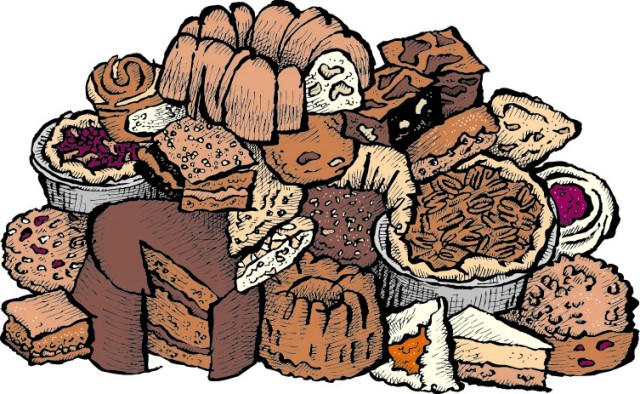
Bacon 101
How is the bacon shipped?
In warmer months (early April to mid September), we ship bacon with two business day service plus warm weather care. The bacon may arrive warm, and that’s completely normal! Dry ice will evaporate, ice packs may melt, but they will have done their job of preventing the bacon from cooking on its journey.
The rest of the year (late September to the end of March), the shipping method will be flat rate service (1-4 business days).
My bacon arrived warm – is it safe?
If your bacon arrives at room temperature or warm – that’s totally okay! Your bacon can take the heat because it’s cured. Curing keeps meat safe by making it inhospitable to the microbes that would otherwise cause rot. Most commonly, this is done by salting, smoking, and drying. When cured slowly and traditionally, these techniques not only make the meat safe to keep, they also make it extra delicious.
If the packaging is puffy or torn, if the color looks grey or un-bacony, and/or if there are any unusual odors, then that means the bacon might not have survived the trip. Let us know and we’ll make it right!
But this bacon package says uncured – what does that mean?
In the U.S., “cured” is not just a word to describe salami, ham or bacon. It’s also a regulatory label enforced by the USDA. To count as cured in their eyes you have to use nitrates from specific sources. Salt and saltpeter count. Celery, beet, and spinach – all naturally occurring sources of nitrates – don’t, which is why you’ll often see the oxymoron “uncured bacon” on some labels. Let me assure you – uncured bacon is cured. You can’t make bacon without curing it. Uncured bacon would just be called pork belly.
How should bacon be stored?
You can store the bacon in the refrigerator or the freezer. Once the bacon is opened, it will be good in the fridge for about a week. Unopened bacon in the vacuum-sealed package will keep for about 3 weeks in the fridge and up to 12 months in the freezer, so seize the opportunity to stock up!

FAQ about shipping cheese
What’s the shelf life on cheese?
- Hard, aged cheeses stay good for a long time. Many days for sure. Sometimes weeks. Bigger hunks of cheese last longer. If it looks and smelled as expected, it’s likely still great.
- What if it’s got a little mold on it? A little mold is no problem. It’s a good sign, it means the cheese is alive. Scrape it off with a knife. But if there’s a lot of mold and it’s turning dark and funky it’s time to say goodbye.
- Soft cheeses and cheese spreads (like pimento and liptauer) are best eaten within a week or two of receiving them.
How do we ship artisan cheese year-round across the country?
In warmer months (early April to mid September), we ship cheese with two business day service plus warm weather care. We employ an ice pack and insulation defensive strategy to protect against warm delivery trucks and warm warehouses and ensure your shipment arrives in great shape.
The rest of the year (late September to the end of March), the shipping method will either be flat rate service (1-4 business days) for our durable hard, aged cheeses or two business day service for our more perishable soft cheeses and cheese spreads.
Hard cheeses have been carefully selected to withstand a longer transit time. Don’t worry if it arrives a bit warm or a bit cold – cheese is durable.
How should the cheese be stored once it arrives?
- Store cheese in the fridge, ideally in the spot closest to 50 degrees. That will likely be the door of your refrigerator or in a drawer where the temperature is consistent but not too cold.
- We wrap hand-cut wedges of cheese in a cheese bag before shipment, and you can continue to keep the cheese in that cheese bag. The next best option would be parchment or wax paper.
- After you open the cheese for a nibble, any remainders can be put back into the bag and closed with a simple roll or fold.
- Do not freeze your cheese! Cheese is a living thing. Freezing will stop the natural processes that keep cheese so tasty.
How should the cheese be served?
Regardless of the kind of cheese, it’s best to take it out of the fridge about 20 to 30 minutes before serving it. Cheese tastes better at room temperature. It makes a world of difference: the aromas expand, becoming more complex; more of the fat spreads on your tongue, which makes the flavor more intense. When cheese is warm you’ll eat less of it and enjoy it more.

How long will the baked goods last?
All of our Zingerman’s Bakehouse pastries and coffee cakes are baked with full-flavored ingredients, but without preservatives. The good news is we’ve done the hard work of tasting and testing to ensure that they can be enjoyed for weeks to come.
If enjoying soon, keep them at room temperature.
Each baked good will have an “eat or freeze by” sticker that is about two weeks from when the package ships out. If enjoying the treats within a week or so of delivery, they can be kept at room temperature in the packaging they arrived in or in a plastic bag. Avoid the refrigerator, it can ruin the texture.
If enjoying later, keep them in the freezer.
For longer term storage, all of our baked goods freeze well for up to three months. They can be stored in the freezer in their original packaging or, if they’ve been opened, double wrapped in plastic bags.
After the freezer, it is best to allow frozen pastries and coffee cakes to defrost slowly at room temperature in the packaging. That’s all–though with some pastries like scones, a little warm up in an oven will make them extra delicious.

A closer look at Marieke Gouda cheese
In central Wisconsin, about halfway between Minneapolis and Green Bay sits the small town of Thorp, home to Penterman Farm. The farm was founded by Rolf and Marieke Penterman, immigrants from the Netherlands. Land was too expensive to set up a cheesemaking enterprise in Europe, so, lucky us, they settled in Wisconsin and starting making cheese.
The Pentermans make gouda every day, all year round, from their closed herd of about four hundred cows. The cows live indoors on comfy beds of playground sand, feed on silage and hay, and have access to spinning bristly brushes dangling in the corners of their pens to scratch their back when it itches. Automated scrapers remove manure from the floors and each cow wears a kind of bovine fit-bit that monitors their temperature, behavior, eating habits, if the cow is in heat (!), etc. The level of technology used may sound antithetical to artisan producers, but it’s not used to make the cows give more milk, just to keep them healthy. When 100% of the milk for your cheese comes from your own cows you tend to take care of them very, very well. These are well loved and well cared for animals and they produce really flavorful milk that becomes really flavorful gouda that rivals the best goudas coming out of The Netherlands.